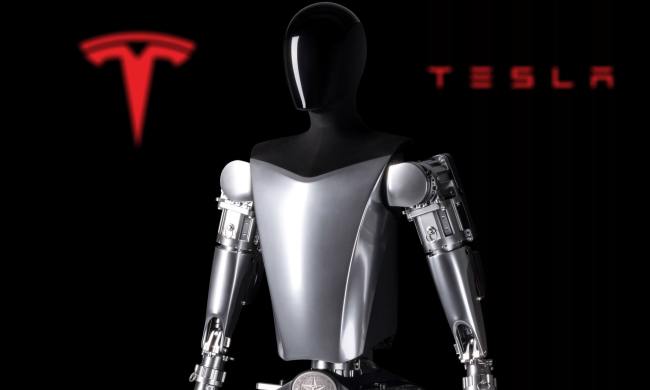If you were looking for clues that the post-pandemic ebike market reshuffle remains in full swing in the U.S., look no further than the latest move by Yamaha.
In a letter to its dealers, the giant Japanese conglomerate announced it will pull-out of the ebike business in the U.S. by the end of the year, according to Electrek.
“As you know, the combination of a post-Covid oversupply within the entire bicycle industry, coupled with a significant softening of the market, has resulted in a particularly challenging business environment where it is extremely difficult to achieve a sustainable business model,” Yamaha says in the letter.
Given these market conditions, the company says it decided to withdraw from the U.S. ebike business and to cease wholesaling units at the end of 2024.
Yamaha introduced the world’s first electric power-assist bicycle motor in 1993. But it wasn’t until 2018 that it entered the U.S. ebike market with a number of all-road, mountain, and fitness/lifestyle ebikes. That year, it offered four brand new models in the U.S.: Urban Rush, Cross Connect, Cross Core and YDX Torc.
In order to sell down its U.S. inventory, Yamaha told its dealers that it’s extending its “Fan Promotion” program, where customers can receive up to 60% off their purchase of a new Yamaha ebike. The program will be extended until June 30, 2025 and the company will continue to provide parts, service and customer support with its 5-year warranty in the U.S.
According to Electrek, Yamaha’s ebikes featured higher-end components, elaborate frames and in-house motors, which tended to put them within a premium price range in the U.S. market.
But as Yamaha itself explained, it appears that the main motive for its decision is the supply overhang which followed a Covid-pandemic boom in ebike demand.
In another sign of the market’s reshuffle, Juiced Bikes, a pioneer in the U.S. direct-to-consumer e-bike market, was last month sold at auction for $1.2 million.
Tesla reveals price range for Optimus Gen2, its ‘robot without wheels’

“The future should look like the future”, CEO Elon Musk said at the Tesla "We Robot" special event held in Burbank, California, earlier this week. Sure enough, Tesla’s much-anticipated autonomous robotaxi, the Cybercab, and its large-van counterpart, the Cybervan, seemed straight out of celebrated sci-fi movies. But as the name of the event hinted at, a vision of the future would not be complete without robots: Several of the Optimus Gen 2, Tesla’s latest version of humanoid-like robot, were found serving drinks, holding conversations with guests, and even dancing at the event.Tesla has recently pitched the Optimus as a potential replacement for factory workers in China and elsewhere. Musk previously said he expects the Optimus to start working at Tesla factories in 2025 and to be available to other firms in 2026.
Yet, at the event, the Tesla boss revealed his expanded vision of a household robot that can do “everything you want: Babysit your kid, walk your dog, mow your lawn, get the groceries, just be your friend, serve drinks”.He also gave a closer estimate of the robot’s price tag: Once produced "at scale," Optimus should cost somewhere between $20,000 and $30,000. Musk had previously said the robot’s price would be about half that of a car.
Staying true to his sci-fi vision, the Tesla CEO referred to Optimus as a cross between R2D2 and C-3PO, the famous droids from the Star Wars film series.
Ever since the first generation of the Optimus was revealed in 2022, Tesla has emphasized the continuity between its cars and the robot. “Everything that we’ve developed for our cars -- the battery power’s electronics, the advanced motor’s gearboxes, the software, the AI inference computer -- it all actually applies to a humanoid robot,” Musk said at the event. “A robot with arms and legs, instead of a robot with wheels.”
Tesla would not be the first to offer a domestic robot on the market. Hyundai-owned Boston Dynamics has already commercialized a home service-type robot called Spot with a hefty price tag of $74,500. BMW and Open AI are backing robots made by Figure, a California-based company. Meanwhile, Nvidia is developing Project GR00T to also deliver humanoid robots.Earlier this year, Goldman Sachs forecast that the annual global market for humanoid robots could reach $38 billion by 2035, with robot shipments of 1.4 million units both for industrial and consumer applications. It also said that robots could become more affordable as their manufacturing cost has been decreasing more than expected -- leading to faster commercialization.
Read more
GM launches PowerBank, a battery that could rival Tesla’s PowerWall

Competition to provide the best energy savings to EV owners is heating up between auto makers.General Motor’s unit GM Energy has just released PowerBank, a stationary energy storage battery pack that gives electric vehicles (EV) owners the ability to store and transfer energy from the electric grid, and allows integration with home solar power equipment.The PowerBank, which comes in 10.6kWh and 17.7kWh battery capacity variants, can power up a home when there is an outage or help offset higher electricity rates during peak demand, GM said. In addition, customers can also use PowerBank to store and use solar energy, supplement the charging of EVs and provide power to a home without an EV being present.GM says that combining two of its 17.7kWh PowerBanks can provide enough energy to power the average American home for up to 20 hours.The PowerBank can be bought as part of two bundles: the GM Energy Storage bundle at $10,999, or the GM Energy Home System bundle at $12,700. The latter includes a bi-directional EV charger that can provide up to 19.2kWh of power. By comparison, Tesla’s energy storage system, PowerWall 3, can store 13.5kWh of energy and has a price tag of $9,300.According to GM Vice President Wade Sheffer, one key advantage of the PowerBank it its “modularity,” which allows for easy integration with existing technology.GM announced in August that it would provide vehicle-to-home (V2H) technology on all its model year 2026 models. It will now also offer vehicle-to-grid (V2G) technology, which can provide additional energy and financial savings.
Energy savings coming from the integration of electric vehicles, solar-powered homes, and energy grids are increasingly at the center of EV manufacturers' offerings.
Nissan, BMW, Ford, and Honda have grouped together to offer the ChargeScape V2G software, which connects EVs to utilities and the power grid. EV owners can receive financial incentives to pause charging during peak demand or sell energy back to the grid.While Tesla has so far backed off from embracing V2G technology, CEO Elon Musk has hinted that V2G tech could be introduced for Tesla vehicles in 2025.
Read more
Juiced Bikes offers 20% off on all e-bikes amid signs of bankruptcy

A “20% off sitewide” banner on top of a company’s website should normally be cause for glee among customers. Except if you’re a fan of that company’s products and its executives remain silent amid mounting signs that said company might be on the brink of bankruptcy.That’s what’s happening with Juiced Bikes, the San Diego-based maker of e-bikes.According to numerous customer reports, Juiced Bikes has completely stopped responding to customer inquiries for some time, while its website is out of stock on all products. There are also numerous testimonies of layoffs at the company.Even more worrying signs are also piling up: The company’s assets, including its existing inventory of products, is appearing as listed for sale on an auction website used by companies that go out of business.In addition, a court case has been filed in New York against parent company Juiced Inc. and Juiced Bike founder Tora Harris, according to Trellis, a state trial court legal research platform.Founded in 2009 by Harris, a U.S. high-jump Olympian, Juiced Bikes was one of the early pioneers of the direct-to-consumer e-bike brands in the U.S. market.The company’s e-bikes developed a loyal fandom through the years. Last year, Digital Trends named the Juiced Bikes Scorpion X2 as the best moped-style e-bike for 2023, citing its versatility, rich feature set, and performance.The company has so far stayed silent amid all the reports. But should its bankruptcy be confirmed, it could legitimately be attributed to the post-pandemic whiplash experienced by the e-bike industry over the past few years. The Covid-19 pandemic had led to a huge spike in demand for e-bikes just as supply chains became heavily constrained. This led to a ramp-up of e-bike production to match the high demand. But when consumer demand dropped after the pandemic, e-bike makers were left with large stock surpluses.The good news is that the downturn phase might soon be over just as the industry is experiencing a wave of mergers and acquisitions, according to a report by Houlihan Lokey.This may mean that even if Juiced Bikes is indeed going under, the brand and its products might find a buyer and show up again on streets and trails.
Read more




















 English (US) ·
English (US) ·